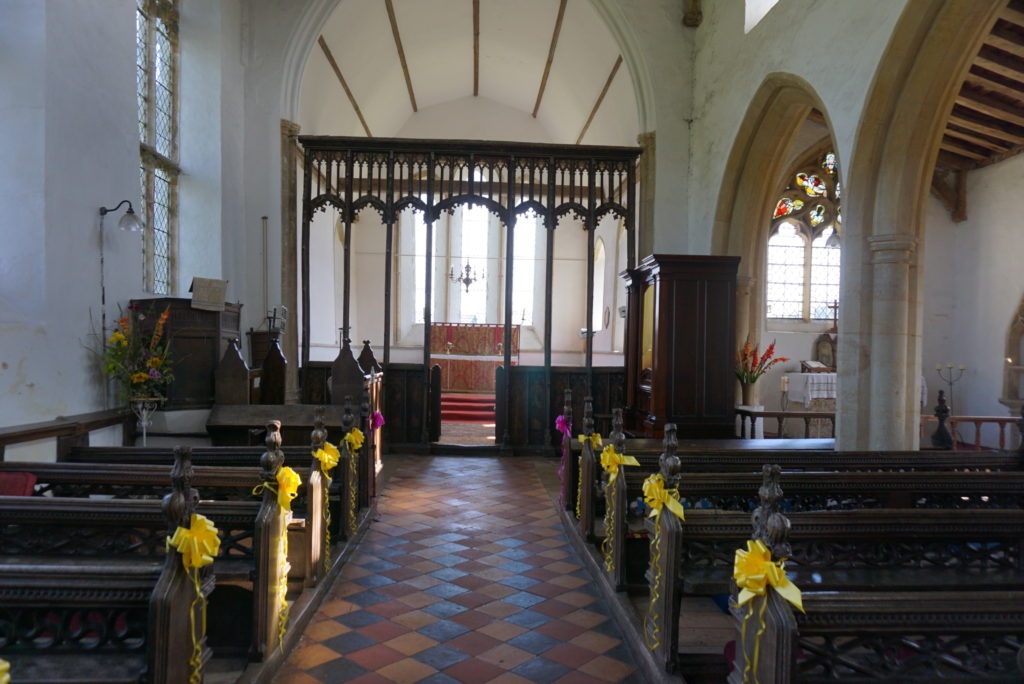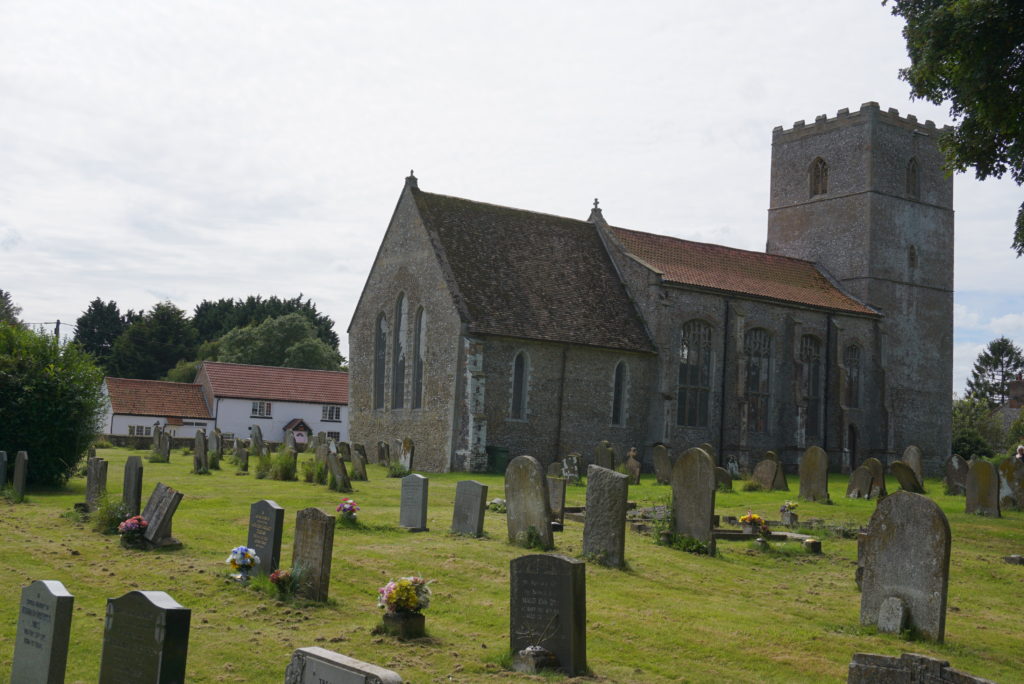When we started our searching we obviously knew this family name but we didn’t actually know a great deal about the ancestors. We searched for Rhonnie’s grandfather Henry but came up against a brick wall when trying to locate his parents. In his army records we found a reference to Yandoit in Victoria, but this made no sense to us. It was at this point that we spoke to Rhonnie’s father, Ian Phillips, about this issue to see if he had any more clues.
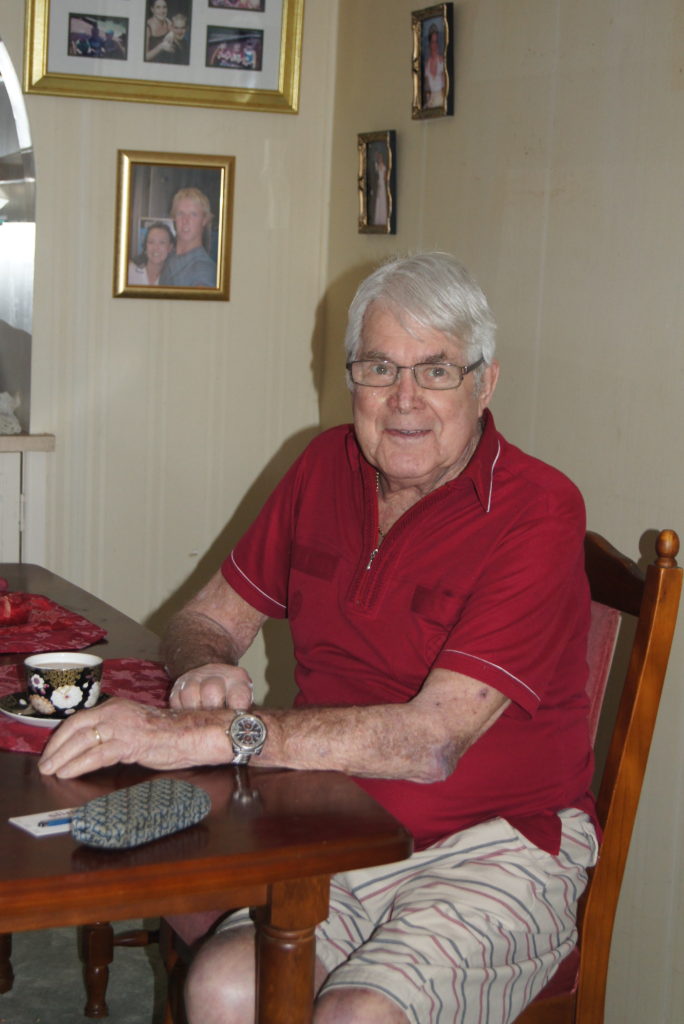
He didn’t know about any family connection to Yandoit, but on further questioning recalled the name of an uncle, a brother of his father Henry, having the name Louis Tognolini. Ian had no knowledge of why this was so. A search through the different records for Tognolini hit pay dirt and the world of Phillips and Tognolini opened up before us.
So, below is the Phillips story, which encapsulates a part of our well known colonial history, from convicts to gold, but in turn leads us to other families, which until now were hidden from our modern knowledge.
This Phillips family name is the patronymic of Philip and with spelling variations is widespread across the British Isles, Germany, Netherlands and further afield.
NORFOLK, ENGLAND, 1800
We begin our Phillips narrative in Norfolk, East Anglia, England. James Phillips was born in 1801 at Necton in Norfolk, about 15km south-west of Kings Lynn and adjacent to the hamlet of Swaffam. All we know of his family is that they resided in Necton and that James had an older sister Elizabeth, born in 1799, who married an agricultural labourer, James Donald of West Winch, a closeby hamlet. In 1819 James married Mary Ann Lambert of Gooderstone and the couple were married in that village, which is about 5km east of Necton.
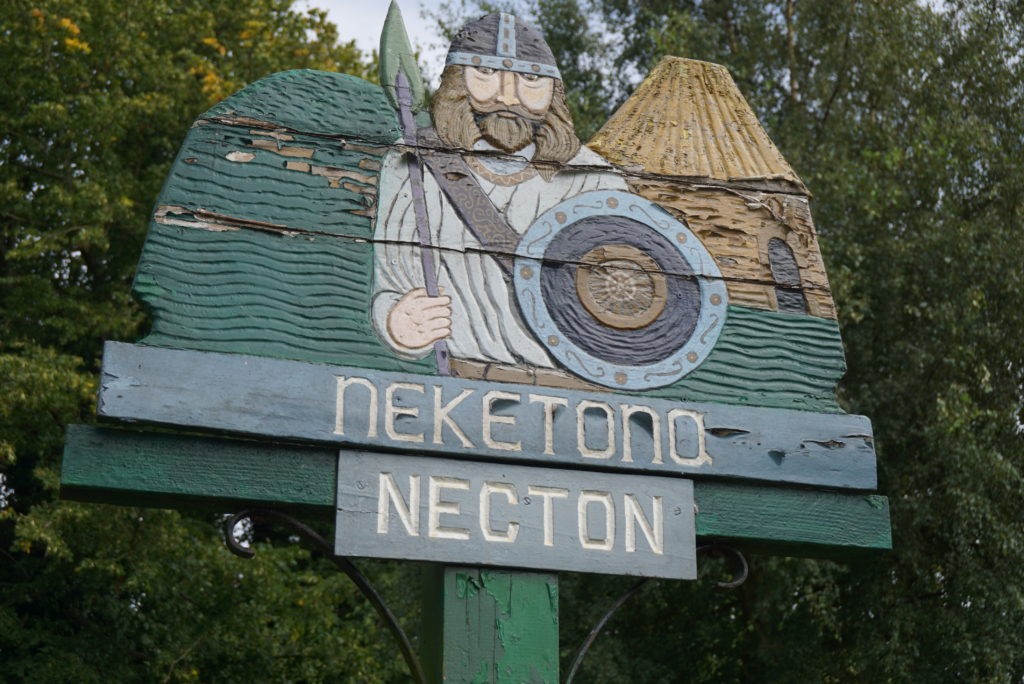
The Lambert families were long term farming residents in the region, but also ran the butchery, the pub and one was the local carpenter. A search of the church cemetery reveals many Lambert graves, and local informants advised of the family name being well known in Gooderstone and several adjoining villages, including Ashill and Necton. Mary Ann’s father was John Lambert and her mother Elizabeth, and she had at least three male siblings, William, John and Henry. Although that is the entirety of our current information. The St George church ‘honour board’ shows the names of three Lambert’s; Alfred E, A.G and Horace, who died in the wars between 1914 and 1945.
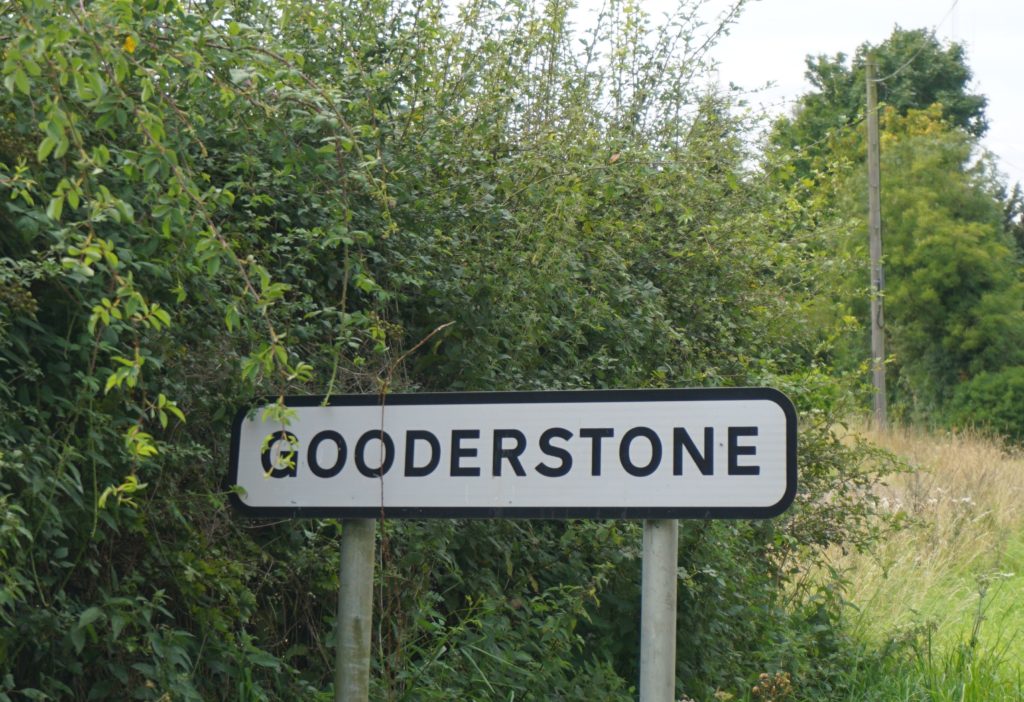
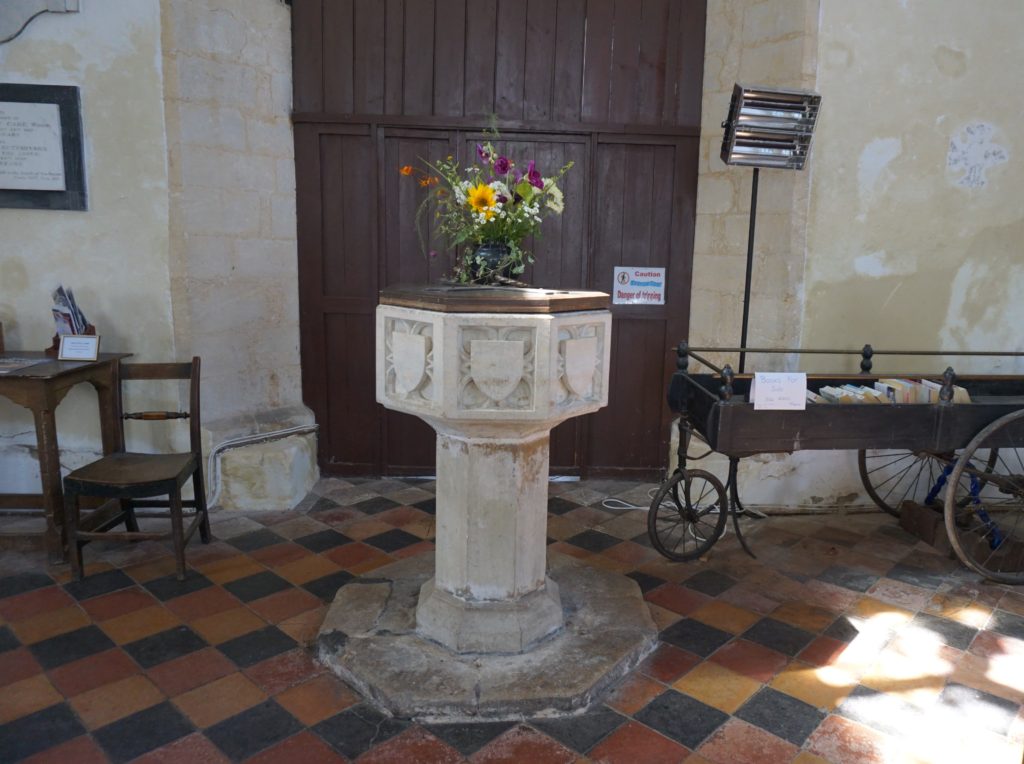
James Phillips and Mary Ann Lambert were married and their first son William was christened in this St George Church in Gooderstone, Norfolk.
A TAILOR, A SHOEMAKER AND FARM LABOURERS
James and Mary Ann Phillips had at least seven children and they were William b1821, Robert b1823, Elizabeth b1825, Lator b1827, Emanuel b1831, Sarah b1835 and James b1837. By 1841, at the age of 40 years, James was a self-employed tailor, and had returned to live in the village of Necton. Of his children; William, the eldest, and brother Emanuel were agricultural labourers, while their brother Robert was an apprentice shoemaker.
SERIOUS THEFT ALLEGED, CHARGED AND CONVICTED
In 1844, elder son William made a mistake that was to change his life considerably. He was arrested, early in 1844, for larceny, in that it was alleged that he had stolen £13 from his employers dwelling, where he was a trusted servant gardener. His employer was the farmer John Ward of Castlerea, Swaffam and on whose estate William was residing. To put this theft into some context; this £13 would have been the equivalent of a years wage for an adult farm labourer at the time and about $50,000 in today’s money. Quite a hoist. Unfortunately, this was the second offence for William, as he had previously been charged with stealing barley from the same farmer. William was found guilty before the Norfolk Assizes on the 25th March 1844 and sentenced to ten years with a period of hard labour and transportation to the Van Diemen’s Land Colony. William was transferred to the London hulks, from where he was eventually transported aboard the ‘William Jardine’, with 270 other convicts, leaving London on the 10th August 1844. The ship arrived in Van Diemen’s Land at Hobart on the 20th November 1844.
William’s father James may have been deeply affected by his eldest son’s demise, as he died shortly after, in 1846. His mother Mary Ann continued to live at Necton and died in 1858. William’s siblings continued to live in the Necton district; Robert continued as a shoemaker, married Elizabeth from Ashill, started the local post office and had six children; Emanuel continuing as an agricultural labourer and married Eliza, also from Necton. Sister Sarah at 18 years was a servant for her aunt Elizabeth at West Winch, Norfolk.
TO VAN DIEMEN’S LAND AND THE ABSOLUTE HELL OF PORT ARTHUR
On arrival at Hobart in November 1844, William was given the intake treatment, which included recording a physical description. He was 24 years of age, of fresh complexion and oval face, dark brown hair and eyebrows, hazel eye colour, minor scars on several fingers and forehead, was 5ft 2in tall, could read and write and was a servant gardener before conviction.
Unfortunately for William the assignment system, where convicts were assigned to work for local residents had just ceased as an option. He was also listed for 18 months ‘hard labour’, which was probably breaking rock, and for this he entered the Port Arthur Prison and stayed there until the 24th March 1846. At this point he joined a work team at a probation centre at Wedge Bay, which was mainly agricultural labouring. On the 20th May 1846 he attempted an escape from this Wedge Bay gang and for which he was punished with more hard labour at Port Arthur and 50 lashes. After completing this new term at Port Arthur, he continued in the probation system, moving to different centres for various work programs. Other than being charged and punished for one occasion of absence without leave and insolence to a guard he survived to obtain a ‘ticket of leave’ on the 27th November 1849 and finally a ‘conditional pardon’ on 3rd February 1852. He was initially not allowed, as a condition of his release, to reside in the Hobart district, but this was rescinded shortly after and we assume that this is where he spent about 6 months before leaving the island colony for better things.
A few comments about Port Arthur. When you visit the current ruins, walk through the cells, read the history, visit the stone and coal work sites, with all of the claustrophobic cells, you know that this place was a hell hole. The thought of being in a cell in Port Arthur horrifies and how you would feel after fifty lashes is beyond our imagination. This little man survived this horror but never saw Norfolk or his family again.
William appears to have set sail for the new colony of Victoria on the 1st September 1852 as a steerage passenger aboard the ‘Creole’, bound for Melbourne. The next record we have for William is that of his wedding certificate when he states, 2 years later, on March 6th, 1854, that he is a labourer living in Kyneton, Victoria.
THE GOLD RUSH
In the new colony of Victoria, Kyneton, established around 1850, had rapidly become the bustling major coach stop and supply town for the central goldfields that had been opening since 1851. Gold was discovered at Buninyong, Clunes and Castlemaine in July 1851. These are areas lying 100-150km south-west of Melbourne Port. William Phillips had landed at Port Phillip in September 1852 and made his way to the goldfields by March 1854, 18 months later, if not before.
The biggest problem we have in researching for this time, of the ‘gold rush’, is that everyone was travelling to the goldfields and nobody was really keeping any accurate record of what was going on and who was coming and going. The Colony of Victoria had only just been established in July 1851, when it was separated from the Colony of NSW. In 1851 the population of the entire Colony of Victoria was estimated to be about 77,000 but by 1855 that had risen to 295,000, most of which was occurring around the growing goldfields. Interestingly the Eureka Anti Licence Petition of 1853, signed by 5000 gold diggers, had four William Phillips’ who signed. So, our William may have stopped over in Ballarat before heading to Kyneton. It will help to understand this time in history better by continuing our story.
WILLIAM MARRIES CATHERINE BATT, 1854
William Phillips married Catherine Batt on March 6th 1854 at Kyneton, Victoria. For the purposes of our story Kyneton lies about 60km north-east of Ballarat and 60km south of Bendigo and 30km south-east of Castlemaine; basically in the middle of the ‘gold fields’ region. Catherine Batt, second eldest daughter of father Henry and mother Mary, had been born in Hobart in 1839, so she was only 14 years old when she married William, who was 34. Witnesses at the wedding were Mary Batt, Catherine’s mother and John Corbett, presumably a friend of William. See further information on the BATT family page.
GOLD MINING AND AN EARLY DEATH
The couple had 6 children over the next decade, before William died on the 26th April 1863, with Catherine then pregnant with another child, Annie, born the year following his death, 1864. William was only 44 years old when he died after being admitted to the Alexandra hospital in Castlemaine. On his death certificate William is reported to have died from exhaustion because of having contracted erysipelas, an infectious bacterial infection from invasive streptococcus that causes considerable inflammation of the upper body. William had had the infection for two weeks prior to being admitted to hospital, where he was treated unsuccessfully for 9 weeks. In 1864 appropriate antibiotics were not available and many people died of this rather horrible disease. William was buried in a pauper grave at the Castlemaine cemetery in the same plot as his son Ambrose, who was only 11 months old when he died.
The children of Catherine and William were Catherine Lambert b1855, Anilen b1858, Amber b1858, Emma b1860, William Stanley b1861, Ambrose b1862 and Annie Elizabeth b 1864; the children, except for Ambrose and Annie, were all born at Campbell’s Creek, just 5km south of Castlemaine, the youngest two at Yandoit. Around 1860 the couple had moved to Yandoit, a small hamlet 20km south of Castlemaine and Catherine’s parents, and some of her siblings, moved there with them.
According to Land’s Department records William Phillips had applied for a land allotment at Campbell’s Creek in 1857, but was probably unsuccessful as he doesn’t seem to have taken this up, instead moving to Yandoit. Yandoit lay within the alluvial goldfield running between Castlemaine and Daylesford, with gold having been found as early as 1854, but by 1858 deep lead mining had commenced at Yandoit, following the exhaustion of the surface alluvial gold diggings in that area. It is likely that William was a digger or deep lead-miner by this time and just before his death in 1863. Another strike in the locality had started another rush in around 1860.
The parish of Yandoit had seen a population flux related to gold discoveries. In 1858 it had fallen to about 200 persons but new finds increased that to 950 by 1865, falling again to 600 by 1879. It was almost certainly the new finds around 1860 that attracted William Phillips and the Batt’s to the district. Miners took out mining licences for small blocks to ‘dig’ and built slab huts to live in from local timbers. It is almost certain that William and Catherine did exactly this on Yandoit Creek about 3km from the Yandoit township as we know that Catherine was still living in a slab hut close to Yandoit Creek, when the land she was on, Allotment 3A, was purchased from the state by a potential farmer, Carlo Gervasoni, in 1868 and he noted her ‘miners rights’ in his application.
CATHERINE TRIES AN IRISH BLACKSMITH – NOT SO GOOD
Following the early death of her husband William Phillips at Yandoit in 1863, Catherine Phillips started another relationship, shortly after, with local wood splitter and blacksmiths labourer, John Humphries b1837 from Ireland and they continued to live at Yandoit; presumably in the miner’s hut built by William and Catherine on allotment 3A in Yandoit Creek. Catherine would have had with her the five remaining children, including the new baby Ann Elizabeth.
Catherine had two more children, with John Humphries as the father, at Yandoit and they were Catherine b1865 and Esther b1867. However, this period with John Humphries did not turn out well for Catherine Phillips or her family.
A few words on John Humphries: in 1868, when he is still living with Catherine, a local newspaper reported:
“At the Yandoit police court John Humphries, alias John Taylor, a splitter and blacksmiths labourer, was charged with committing a rape (in 1867) on Catherine Lambert Phillips, a girl under the age of 12 years and over 10 years. The hearing brought out evidence unfit for publication, and resulted in the prisoner being remanded”.
These newspaper reports from the time also state that Catherine Lambert‘s mother, Catherine, had been living with Humphries following the death of her husband and the crime was reported to Police by an Aunt of the victim, presumably one of mother Catherine’s sisters as witnesses at the trial included Elizabeth Kelso, mother Catherine’s married sister. Other witnesses were Catherine Lambert’s brother William Stanley, Henry Batt her father, and neighbours Hugh Smith and William Crisp. The trial record states that: ‘John Humphries was convicted in 1868 and sentenced to death.’ This was then commuted, some months later, on appeal, to 10 years hard labour at the Norfolk Island Penitentiary, with the first 3 years to be in irons.
Catherine Lambert was taken into the care of the State in 1867, before the trial, and the court records state that ‘mother Catherine was unfit to care for the child Catherine Lambert’. However, she appears to have been ‘fit’ to care for the remaining children, of which there is no mention and she continues to live with them at Yandoit, in a timber slab hut.
After John Humphries was incarcerated in 1868, Catherine Phillips continued living alone in the hut on Yandoit Creek Rd, allotment 3A and as we have said was approached by local miner and farmer land owner Carlo Gervasoni, a Swiss-Italian migrant, for permission to purchase the land allotment for farming; this was necessary under the Lands Act at the time. Catherine agreed for this to happen if Carlo allowed her to stay in the ‘miners hut’ for as long as she wanted. Carlo agreed to this and so obtained agreement to purchase the land from the State. The adjoining land allotment, lot 7, was owned at this time by another Italian, one Luigi Germani.
TRYING AGAIN THIS TIME ITALIAN
Catherine Phillips continued living at Yandoit Creek and probably survived with the help of her family who continued to live in the area. Three years later, she decided to marry again; this time to her neighbour Luigi Germani, on 21 Oct. 1871 at Yandoit. Luigi was the son of Stephano Germani and Maria Borselli, born in 1840 at Asti, Piemonti, Italy.
Catherine and Luigi began life together in another slab house that Luigi had built after purchasing the 30-acre Allotment 7, Yandoit, in 1868. Luigi appears as an industrious farmer as in 1878 when a lands inspector surveyed the site he recorded that the couple had ‘18 acres sown with wheat, peas, oats and potatoes, 2 acres of vines and 100 fruit trees.’ Sometime shortly after this Luigi and Catherine built a stone house that was still standing in 2018, on a hill close to the Yandoit Creek Road.

Catherine and Luigi had three children together and they were Josephine Maria Mada b1871, Maria Madelina Vivia b1873 and Stephen Samuel b1875. Catherine died in 1891 at 52 years and Luigi in 1905, both died at Yandoit. She had had twelve children across three different relationships. She needed to be in these relationships to survive, aged from 14 to 52; an amazing woman. Our family line will continue through her daughter, the youngest Phillips daughter, Annie Elizabeth.
As an interesting historical aside; Luigi Germani died in 1905 and his will in probate is on the public record. The administrator and only beneficiary was his youngest daughter Maria. His estate was valued at £290.8s.6d, and his debts at the same amount.
CATHERINE’S CHILDREN
Firstly, a brief summary of Catherine’s children’s stories. Of the Phillips children: Catherine Lambert was made a ward of the State in 1867. The Government records of the time show that Catherine Lambert was committed into care on the 31st October 1867, for a 2 year term. It clearly states that the mother was unfit to care for the child. Catherine at 12 years old was taken into care and then ‘licensed out’ to Mr Samuel Crunston of Hotham, a ‘general dyer’, for 12 months. After that she was ‘engaged to work’ for a Mr William Penant, Melbourne for 12 months at 6 pence a week and then, until June 1871 to the Station Master at a Melbourne station, at 4 shillings per week. By this time Catherine would have been 16 years. Where did she go from this time of her release from care?
From research undertaken by Wayne Tognolini, it seems likely that Catherine married in 1877 an August Lucas in Deniliquin, NSW. Certainly, the records show a Catherine Lucas who died in 1920 at the age of 66years living at North Melbourne or Hotham.
William and Catherine’s daughter Amber, as we have previously observed, died before she was twelve months old and sister Emma died at 16 years, and brother Ambrose died at 11 months.
Their son William continued to live in the Yandoit area but currently have not identified and further history.
Catherine Phillips’ children, the two Humphries girls, Catherine and Esther, have left no trace, to date.
Of the Germani children we know that Maria married Albert Hockey in 1897 and they had six children before she died, aged 35, in 1909; they lived at Dunolly, Victoria, which is about 50km north-west of Castlemaine. Stephen died still single, also living in Dunolly, in 1899 at the age of 24 years. Josephine also appears to have moved to Dunolly but we have no information on her family. Albert Hockey, son in law, handled the probate of the estate of Luigi Germani, along with wife Maria, which included selling the house and land to cover her father’s outstanding debts.
ANNIE PHILLIPS. ANOTHER AMAZING WOMAN
Returning, now, to the youngest daughter of William Phillips and Catherine Batt, another amazing woman who will continue our family story. Annie Elizabeth Phillips b1864 was born in and brought up around the Yandoit area, living with her mother Catherine and her mother’s partners, firstly John Humphries and then Luigi Germani.
When Annie was 20 years old (1884) she gave birth to a child at Yandoit; most likely at the Germani house on Yandoit Creek Road. The father of the child was not disclosed on the birth certificate but that child she named Henry, probably after her grandfather Henry Batt, and registered the birth child as Henry Phillips b1884; (Recent DNA searches have identified the father and that will be discussed shortly, when we look at Henry’s life a bit closer). Annie and her child continued living in Yandoit, with her mother Catherine, her siblings and step-father Luigi Germani, but throughout she retained her Phillips name. In October 1884 her brother William Phillips applied for a land allotment at Yandoit and then in November Annie applied for a similar allotment. Both applications were refused.

ANNIE OPTS FOR SWISS-ITALIAN CHARCOAL BURNER
Interestingly, for our story, also in 1884, one Antonio Tognolini, a Yandoit resident, was in Court after getting into a fight in Yandoit with Giacomo Tenni, who bit off part of Antonio’s ear. Both men were charged with affray. Some two years later, in 1886, Annie commenced a defacto relationship with this Yandoit resident and neighbour Antonio Tognolini. Antonio would have been about 36 years old and Annie 22 years. Annie and Antonio went on to have twelve children in Yandoit and their story will continue on the TOGNOLINI page.
Annie’s first son Henry, born in 1884, was brought up by Antonio and Annie together from when he was less than two years old and as the eldest child would have been close to the other children, as they grew up. As Henry retained the name Phillips and was not a Tognolini by birth, we will continue with his story.
SEARCHING FOR HENRY’S FATHER
Henry’s father is not shown on his birth certificate and the modern family had no knowledge of the illegitimacy, let alone knowledge of the father having ever been identified. In 2016 Henry’s son Ian Maxwell Phillips, then 89 years old, agreed to submit DNA for a patriarchal search. That DNA was matched by ‘Family Tree DNA’ with the DNA of an American family whose patriarchal ancestry line had the family name of Penman and that story will continue on the PENMAN page.
HENRY PHILLIPS, CARPENTER TO SOLDIER TO MARKET GARDENER
We do know that Henry, who retained the Phillips name, as had his mother, eventually, became a carpenter. In his early years, as the eldest son, he worked with Antonio felling timber, helping with the charcoal burners and assisting in the house building. The stone house shown, at 695 Yandoit Creek Road, was the family home for Henry and all the Tognolini children throughout their formative years.
Henry Phillips was born in 1884 and trained as a carpenter in his teens. This most certainly started with him assisting Antonio with his house building. He then may have worked as a carpenter locally for a while but by the time he was 20 years, 1904, he had left Yandoit and was living in Terang.
A decade later, in 1914, he married Esther Jane Hallett and they moved into a house in Bayne Street, Terang, where their first child Doris May was born in 1915. Terang is near the Victorian southern coast, close to Warnambool and where Esther’s parents also lived. The Great War (WW1) had started in 1914 and was to impact on their lives. In July of 1915, Henry enlisted, at Yandoit Mechanics Hall, for military service in the Military Police Corp, to serve in WW1. Three of his Tognolini brothers also enlisted at the same time, but in the AIF; John (Jack), Stephen and Andrew. Two served in Gallipoli and France. This looks like some ‘brothers arrangement’ because Terang was some 220km from Yandoit, a fair hike for Henry, so that all brothers could sign up on the same day.
SOLDIERING MADE DIFFICULT THROUGH ILLNESS
Henry was stationed at MP Corp. Headquarters, which was at Ascot Vale, Melbourne. It is interesting to note that his Army Police Record describes him as ‘Fair, blue eyes, fair hair, 5ft 9in and nearly 12st’. It also said that he was a ‘salvationist’, which came about through his wife Esther’s family interests. Henry was discharged from the MPC almost immediately, in November 1915, because of ill health due to appendicitis surgery complications. He returned to Terang and his family, but shortly after this they moved to Close St, Dandenong, south-east of Melbourne, where Henry indicated on the electoral roll that he was a ‘market gardener’. We do not know exactly what drew them to Dandenong from the Terang district but we are aware that Esther’s parents, who were the Salvationists, moved from Terang to Williamstown and then Dandenong around this time. Harold, Henry and Esther’s second child was born at Close Steet in 1916.
Henry, who was 31 years old by this time, obviously felt that he should be with his brothers, as he went back to Yandoit and re-enlisted a year later in November 1916 and this time in the AIF 60th Battalion (3212) and was in the 8th Reinforcement to leave for France. He was transported to France in December of that year aboard the A7 ‘Medic’, arriving in Plymouth in February, but was taken immediately into hospital in England with severe bronchitis, which lasted for a 6-month period, before he eventually got to France in July 1917. As a Private, Henry was immediately transferred to the 66th Battalion on the Western Front, serving at Havre and Boulogne, where he served until September that year, several times being admitted to the Field Hospital with the Bronchitis reoccurring, and was returned to hospital in England at the end of that month. In December Henry returned to France, again, this time with the 60th Battalion but by January was back in Hospital. Despite repeated illness, in and out of Field hospital, he stayed in France until March 1918, when he returned to England for a short stay before embarking for Australia in May aboard the HT ‘Gaika’, arriving in July of that year in Melbourne. He was formally discharged on the 22nd August 1918.
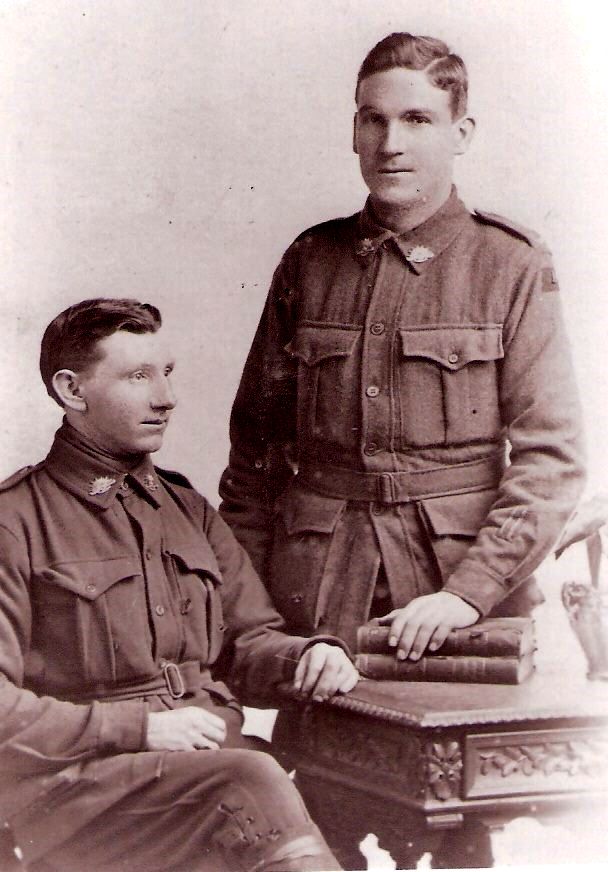
Whilst Henry was serving in Europe, Esther stayed in Dandenong, except for a brief period, in 1917, when she returned to Terang to look after her sick brother Sydney Harold. On Henry’s return from the war in 1918 he returned to the carpentry trade and by 1919 they had moved to a new address at Chandler Road, Dandenong, where they stayed until 1931, when they moved to Edith St, Dandenong. The family verbal archive has Henry and Esther growing small crops at Chandler Road to sell at the Dandenong market. Henry also became the local superintendent of the Dandenong market during this period.
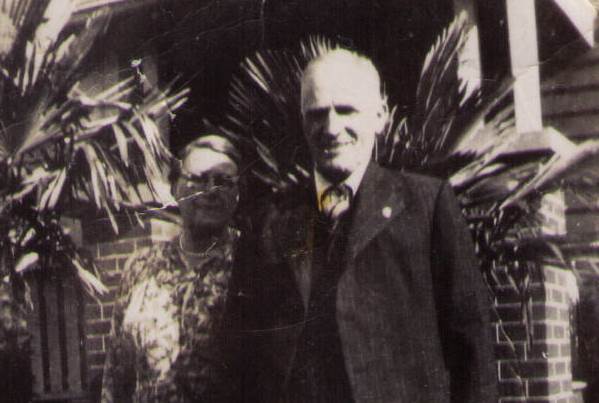
Henry and Esther 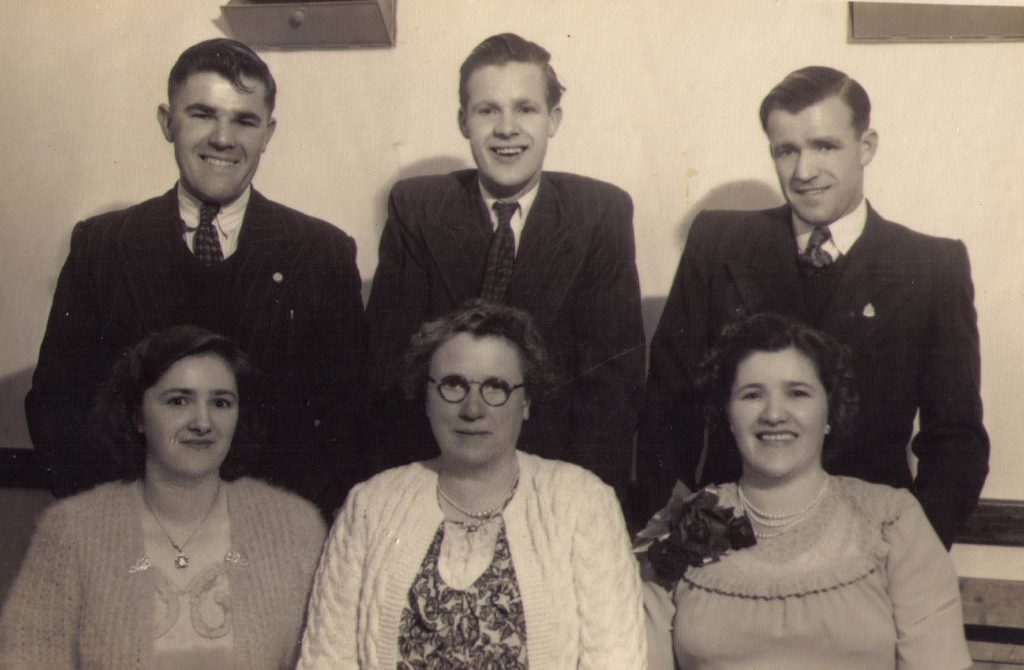
Esther, Lorna, May, Lional, Ian, Stanley
Henry and Esther Phillips had nine children over these years and they were Doris Marie b1915, Harold b1916, Ronald b1919, May Iris b1920, Stanley A b1922, Victor b1923, Ian Maxwell b1926, Lionel b1930 and Lorna b1932.
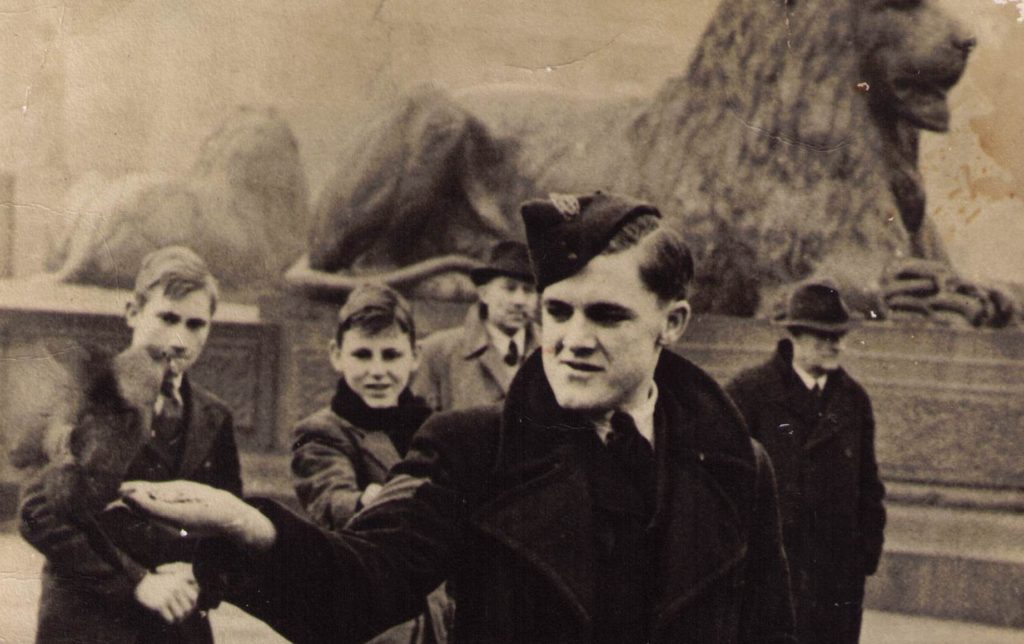
Victor 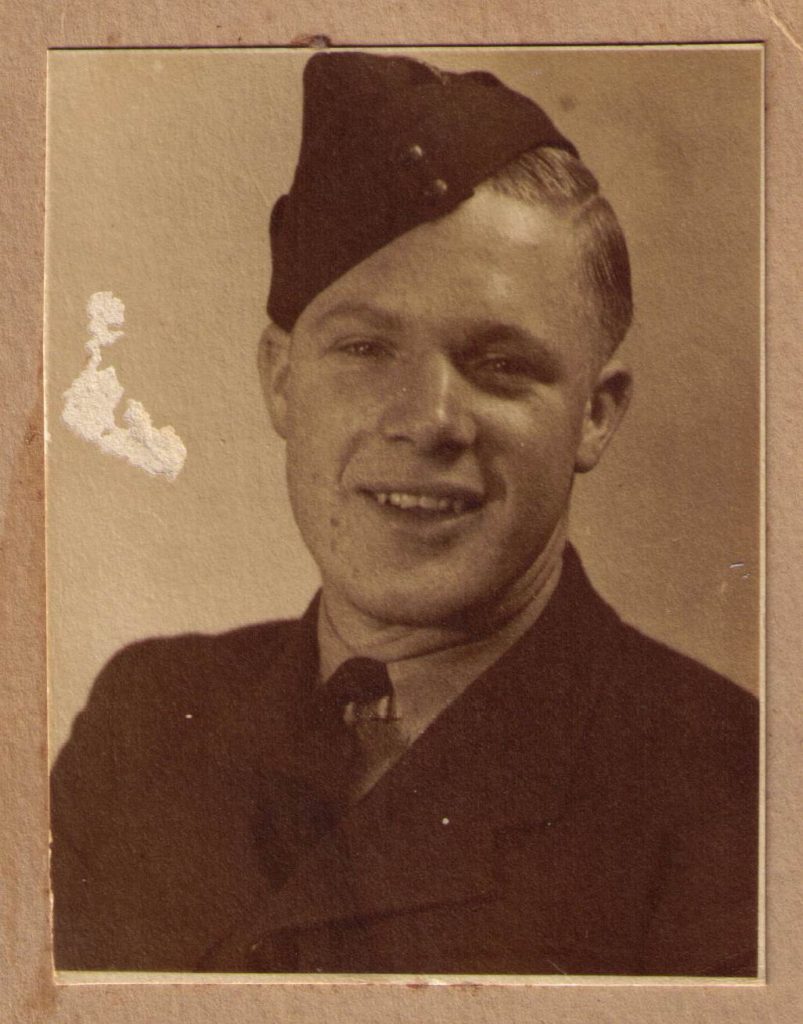
Ian 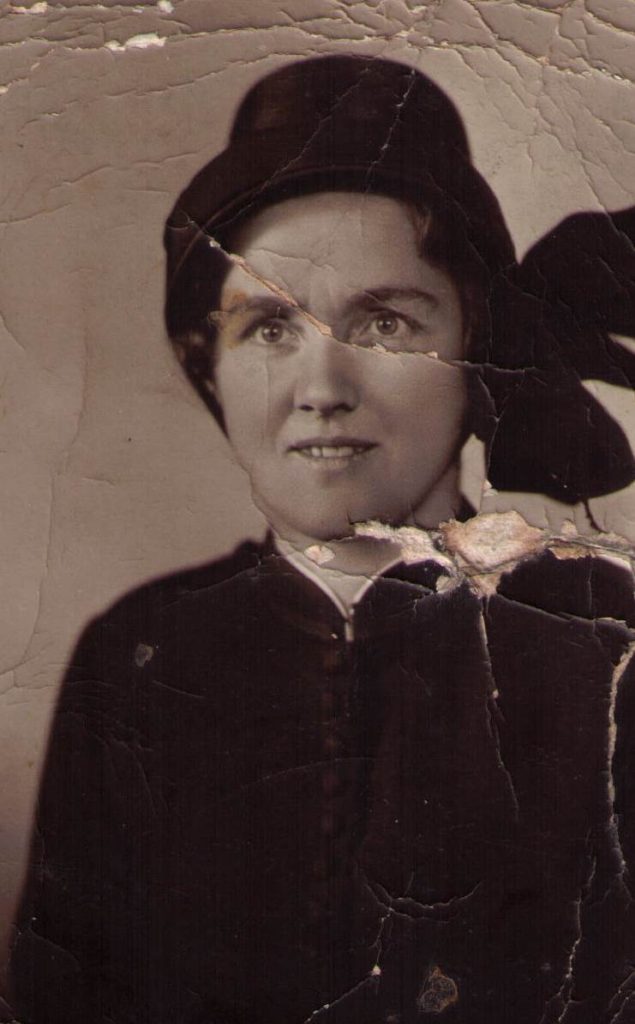
Doris
Henry died in 1950 but Esther continued to live in the Dandenong house at Edith St until she had a stroke, when her eldest daughter Doris moved in to care for her. Subsequently Esther accompanied Doris when she returned to work for the Salvation Army at aged care residential services. Esther died in 1968 at Footscray.
Our family line will continue through Rhonnie’s father Ian Phillips, but first something about the siblings of Ian. Sister Doris Marie became a salvationist following the path of her Hallett grandparents. Doris stayed single and died at 60 years in 1975.
Brother Harold married Dulcie Edwards and they had seven children; Pamela b1948, Frank b1949, Patrica Ann b1952, Rae b1954, Harold b1956, Vickie b1959 and Gary b1959. Harold was a labourer in Dandenong in 1942, prior to the couple getting married. They moved to Toowoomba, Queensland in about 1949, where Harold became a storeman, in the 50’s, and then in 1968 a shop assistant. About 1977 they moved to Pialba, Wide Bay, Queensland, presumably in retirement.
Brother Ronald married Lorna Rowe and they had one child Allan Ronald b1957. Ronald was a mechanic before he married Lorna. He had his own Garage in Scoresby by 1949 and then again in Traralgon, Gippsland in 1963. In 1980 Ronal and Lorna were still living in Traralgon, at Ray St, but they had sold the business and Ronald was driving a crane. Son Allan married Pam Joy and they had two children, Anthony and Nicholas.
Sister May Iris married Henry Ronald Andrews; Henry, known as Ron was a commercial driver in Dandenong, where the couple lived initially. By 1942 they had moved to Berwick and in another seven years had opened a grocers shop in Market Street, Berwick. Business was good, as by 1954 they had purchased a grocery business in Glenhuntly and moved to live in Glen Waverly, They continued to run this Glenhuntly business into the 1980’s. May and Ron had two daughters, Lynette and Joan. Lyn married Kevin Rice and had children Timothy and Nicholas. Joan married Roger Osborne and they had children Andrew and Richard.
Brother Stanley Alex married Mary and they had four children before moving to New Zealand. The children were Barbara, Ian, Sheryl and Katherine.
Brother Lionel married June Hickford and they had three children, Victor b1955, Glenn b1959 and Michelle b1960.
Sister Lorna married Paul Wulf and they had three children Dianne b1952, Trevor b1956 and Bronwyn b1964.
Brother Victor Wilfred died on 3rd June 1944 in WW2. Victor was a Flight Sergeant in RAAF 466 Squadron. (See War Record; S/# 428454.) The 466 Squadron was based at RAF Leconfield in Yorkshire, England and in 1944 were flying Handley Page Halifax bombers in strategic bombing raids to support the invasion of Europe. Victor was the Mid Upper Gunner in HX271 which crashed at Dannemarie, south east of Houdan in France. Their mission was the railway yards at Trappes. Victor died in the crash and is buried in the Dreux Communal Cemetery, France.
Ian Maxwell Phillips, served in the RAAF at the end of WW2, and subsequently completed an apprenticeship in plastering. Ian married Beryl Ione Rowe in 1950 and the couple continued to live with Ian’s mother in Dandenong.
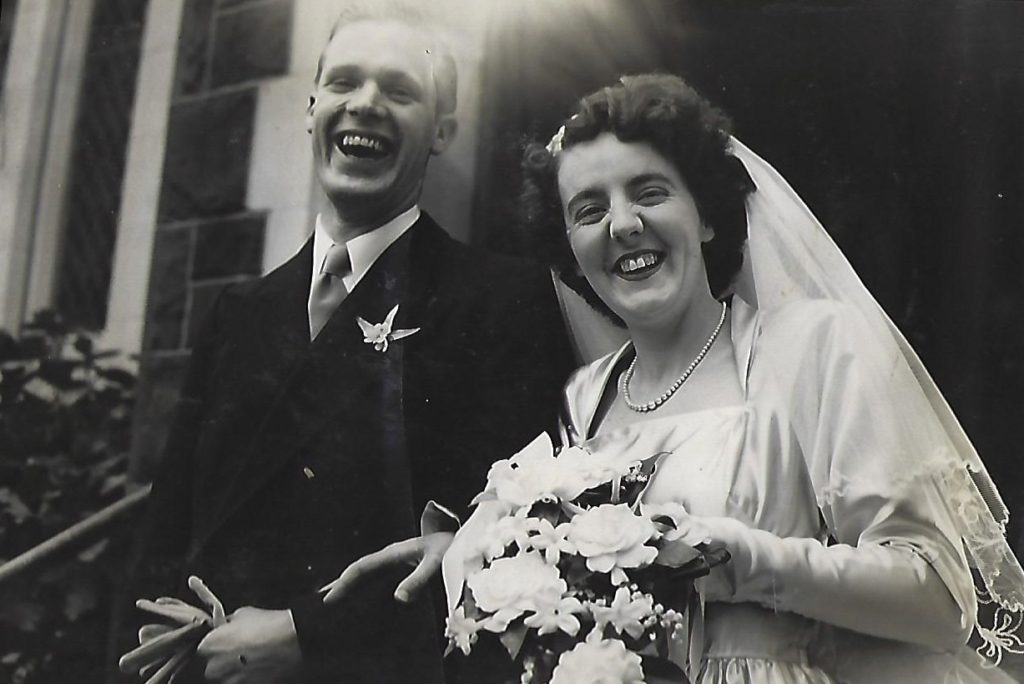
Happy couple – just married
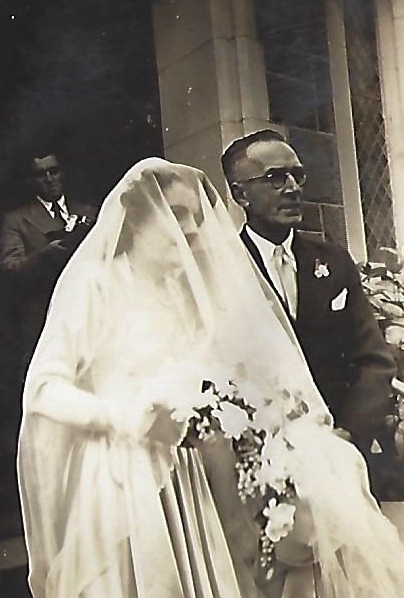
Beryl’s Wedding – father, George Forrest Rowe 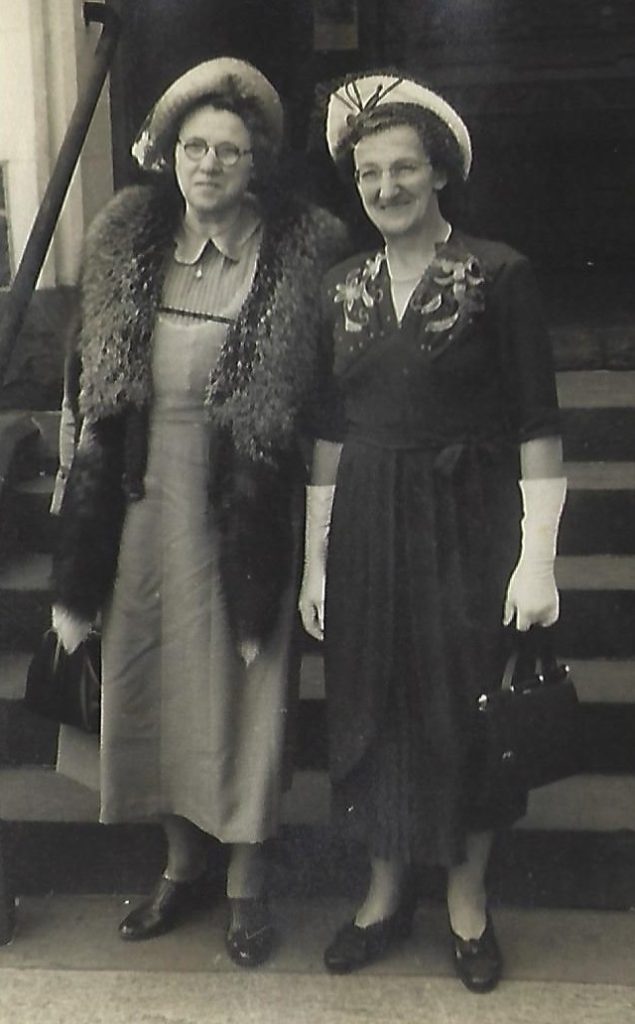
Mother’s of the couple on the Church steps, Esther Phillips and Edna Rowe
